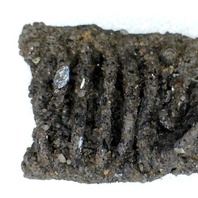
Viking Objects
Silver Wire Embroidery (1988/225-16)
This silver wire was found in Mound 11 at Heath Wood, Ingleby, Derbyshire. This burial mound contained fragments of the remains of an adult human together with the cremated remains of animals, including a small dog, a horse and sheep. The burial was accompanied by this silver wire, an iron spade shoe, some small iron nails and some corroded metalwork. The silver wire was found in two parts with traces of carbonised fibres attached. This suggests that it was probably attached to a piece of cloth. Silver and gold embroidery are known from a number of Viking Age graves, including from nearby Repton, Derbyshire, as well as further afield, e.g. Birka, Sweden. At Birka, wire embroidery was found on caps and headbands, although there is no reason to think that it was only used on headgear at all times.
Read More
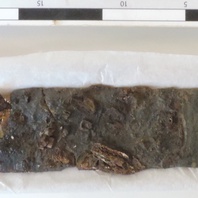
Viking Objects
Sword Blade (1987/590-2)
This fragment of a sword blade was found at the Viking cemetery at Heath Wood, Ingleby in Mound 1. It is incomplete and consists of a 385mm long section of the blade with a rounded tip. the blade has a fuller down the middle to reduce weight. The sword would probably have been over 900mm long when complete, so less than half the blade survives.
Read More
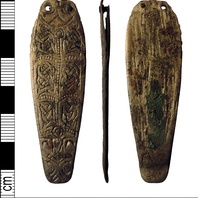
Viking Objects
Anglo-Saxon Zoomorphic Strap-End (NCMG 2003-27; T2001:2 ; 2002 T21)
A large silver strap-end with simple chevron decoration and six incised panels of ribbon knotwork divided by curved laddered frames. This strap-end is typical of ninth-century Anglo-Saxon design from the Yorkshire school. The border design is also found on the Trewhiddle type but due to its lower quality execution this strap-end is probably an imitation. Strap-ends came in various styles and were fairly common throughout the Viking world. They were used to decorate the ends of belts and to stop them getting damaged.
Read More
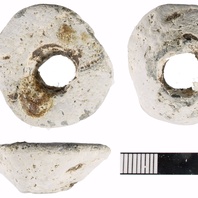
Viking Objects
Lead Spindle-Whorl (NLM-1E7FD8)
This cast lead spindle-whorl is classed as a Walton Rogers A1 type and, due to its mass, it was likely used for spinning yarn. Fibres were spun into thread using a drop-spindle of which the whorls were made of bone, ceramic, lead or stone and acted as flywheels during spinning.
Read More
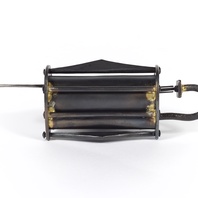
Viking Objects
Reproduction Iron Padlock
Complex metal locks such as this one would have been expensive to manufacture and thus were, generally, used to protect one’s most valuable possessions.
